I’ve been sharing some posts showing “unidentified hardware objects” as a way to help readers who are less familiar with the numerous parts and pieces that make up a door opening. The idea for today’s post actually came from a question I received about the standard mounting location for an EPT. So for starters…what’s an EPT?
Someone recently sent me a photo of a door opening that wasn’t functioning as required by code, and in my response I noted that the door had electrified hardware. I was asked how I knew that, as there was no way to tell just by looking at the panic hardware. The presence of the Von Duprin EPT was the tip-off.
An EPT is an electric power transfer, and in the photo below, you can see one on the edge of the door – above the panic hardware. The purpose of an EPT is to transfer the wires between the wall/frame and the door, to provide power to the electrified hardware and/or to carry a signal from a switch within the hardware. This switch may release an electromagnetic lock for egress, signal a “legal release” to the security system, or perform another function.
There are other products that serve this purpose, like an electric hinge or a door loop, but the EPT is the product I have always preferred to specify. Unlike a door loop (AKA door cord), the EPT is concealed when the door is closed and is less prone to vandalism. An EPT can accommodate larger gauge wires than a typical thru-wire hinge, increasing the durability and reliability of the access control system.
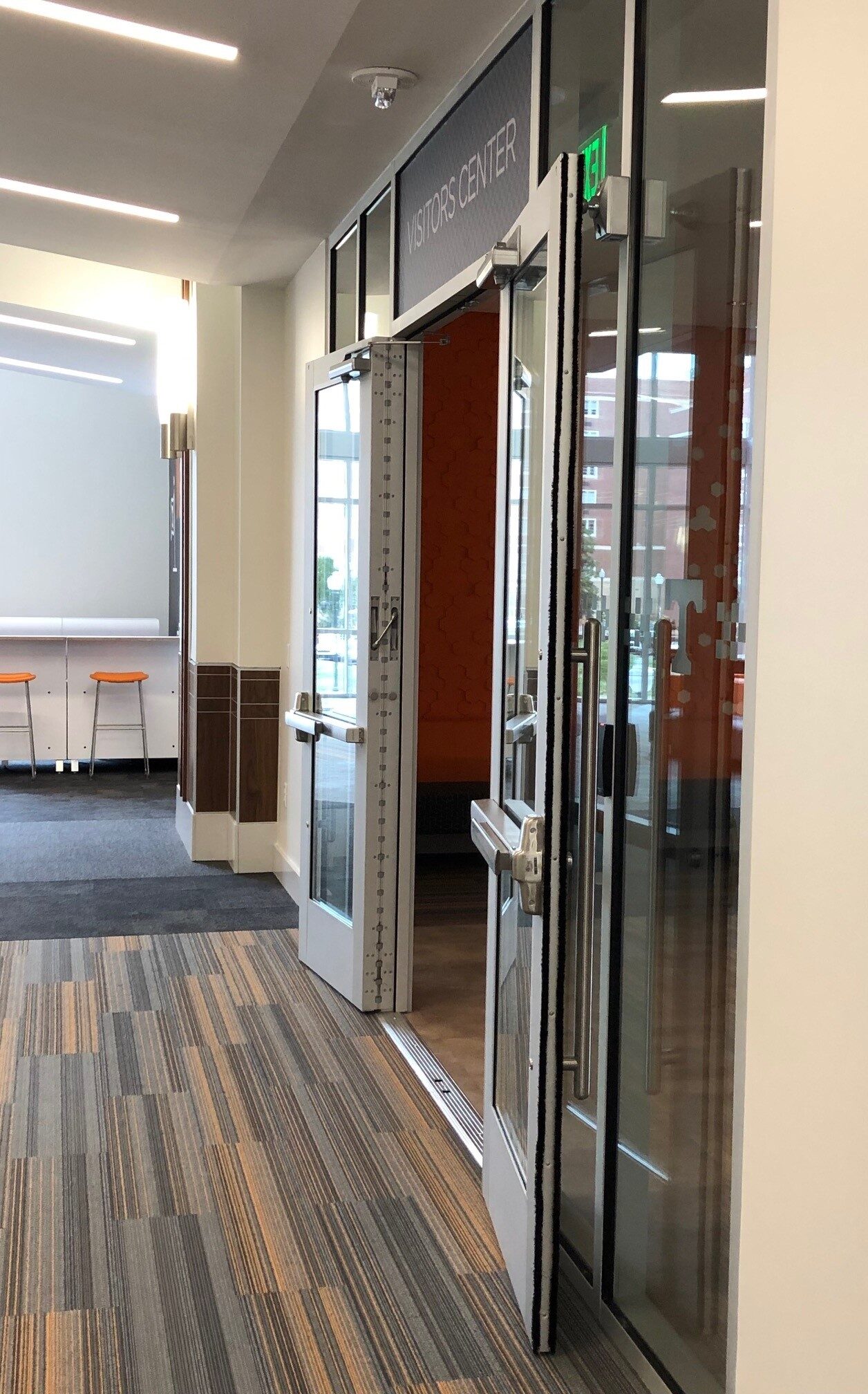
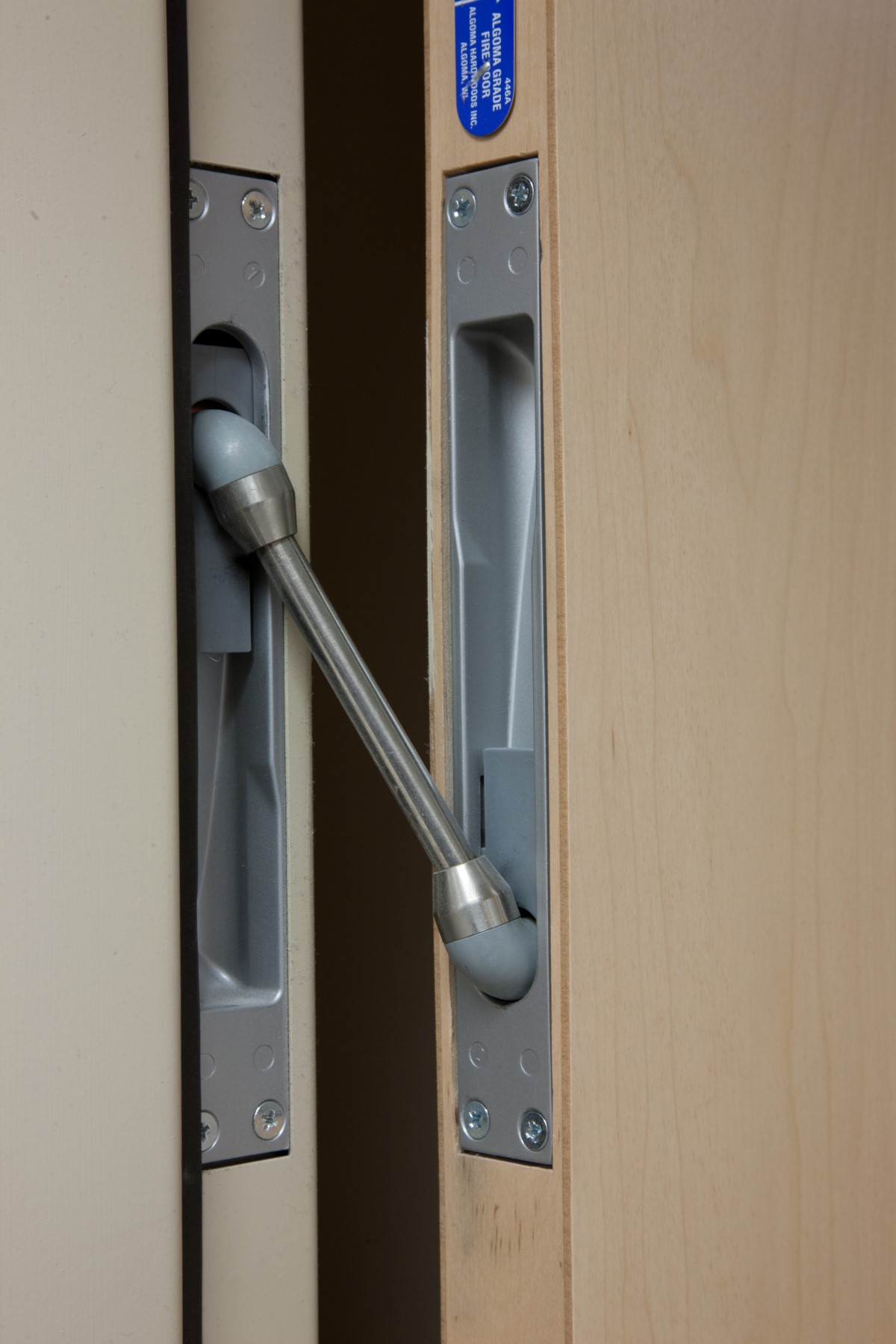
As for the standard mounting height, I found the answer in the Allegion Knowledge Center (6 inches below the top hinge). The Knowledge Center is a great resource, as our product support team has been collecting common questions and answers there for years. Check it out the next time you have a question about Allegion products!
You can see the whole list of “What’s that?” posts by clicking here – and the list will grow over time! If you have any photos to share, you can upload them on the photo submission page.
You need to login or register to bookmark/favorite this content.



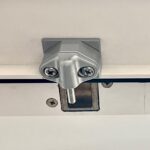
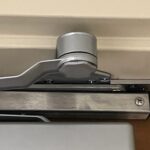


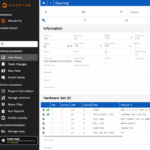

After several lengthy conversations with Allegion and much experimenting over the years, we established our permanent location of all EPTs for 7’0″ doors: 22-1/2″ down on the frame and 22-3/8″ down on the doors. By doing this and the high number of preps that we have to do, we can always be assured that everything matches. This location allows the perfect amount of room for the mortar box on the back without interfering with the hinge reinforcement for all the locations we usually come across. However, there is one potential downside to this location. It shares a location with one other thing. Yup, you guessed it—the fire label. If you are in a shop that buys your doors and frames pre-labeled, you will get into trouble if you cut in an EPT. This is not an issue if you are a WH or UL shop and can label your frames.
That is a really great point, Bill!
– Lori
I am a big fan of the EPT, but at $400 to $500 a door, not including installation, the cost is a problem for me when the budget is tight. I ofen end up using a very short armoured door loop, located at the top of the door at a cost of less than $50. One thing not mentioned is that the EPT makes servicing much easier.
The serving is a great point, Jim! And yes, sometimes a door loop is the way to go. I just prefer to specify EPTs from the get-go because I was typically specifying hardware for new doors.
– Lori